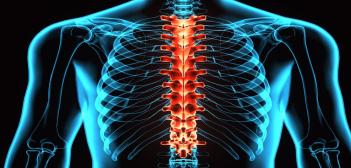In dietetic circles, it is now widely understood that carbohydrates – and not fats – lead to weight gain. Secondary school children are taught in their biology classes about the body’s glucose assimilation processes. They are taught how excess blood sugar (the digested form of carbohydrates) is stored as glycogen. And how this metabolic product is further deposited as fat; for future breakdown in times of carbohydrate deprivation. You can find more research studies in detail with a Frontier internet service plan.
Some basics of low-carb dietary approaches:
On the Health & Weight Loss Appeal of Low Carb Dieting
No health expert recommends cutting carbs from your diet altogether. For one, these are the body’s go-to fuel source for quick energy. Fats are significantly more difficult to process, while proteins have an altogether different role to play. The problem arises when we consume a higher percentage of carbs than required daily. Most health authorities place the recommended intake in the 100 – 130 grams per day range.
Most nutritionists opt to put their overweight patients (BMI 25 and above) on low-carb routines. These regimens, which are also highly restrictive calorie-wise, gradually induce a slight ketogenic state. This happens, on the cellular level, when the body is unable to meet its daily carb requirement from food. To offset this need, it is forced to break up its stored glycogen (fat cell) reserves. When this process continues for a sustained time period, rapid weight loss occurs.
Carb Restriction, Fats and Ketones
It is not uncommon for low-carb dieters to lose up to 15 pounds in the first few months. During this, they are advised against exceeding their prescribed daily share of sugar. But after three days following their new dietary routine, the ‘going’ gets easy. The body now relies on ketones (yielded from the breakdown of fat cells) to keep itself afloat.
When compared with a single glucose molecule, ketones result in more ATP production during cellular respiration. ATP molecules comprise the body’s energy currency. It is for their production that our bodies (like most living organisms) require food, water, and oxygen. Their depletion naturally sets in after the age of 40. That is when we feel fatigued.
As more and more ketones break free from their fat/adipose ‘traps’, the more you shed off weight. After a few days of low-carb dieting, however, many individuals can experience a plateau. This is the point where the body adapts to its new mode of eating. Here, your weight scale will refuse to move back any further.
Breaking Plateaus with Glycemic Altering
In order to keep shedding weight, diet experts recommend altering between low & high glycemic carbohydrate foods.
High glycemic foods (judged above the 50 mid-point on the 0 – 100 Glycemic Index scale) provoke sugar spikes. They are easily digestible, and cause a sudden upswing in blood sugar levels.
These types of foods are best to get instant energy. But on the flipside, their energetic ‘highs’ are rapidly followed by ‘steep’ lows. These make their consumers quickly feel tired, and hungry. Sugar cravings at odd times are symptomatic of this stage. And if these hunger pangs are acted upon, they lead to binge eating.
High glycemic foods include table sugar, white bread, fruit juices and soft drinks.
Low glycemic foods are the exact opposite, in that they take longer to digest. This is due in large part to the presence of insoluble fibers, proteins, and fats in their makeup. By staying longer in the stomach and the intestines, they result in gradual blood sugar yields. In so doing, they don’t produce food cravings.
Low glycemic foods include all fibrous, unrefined foods like whole grains and seed products. Proteins and fats, which are set at a glycemic load of zero, fall in this category.
All low carb foods can also be referred to as ‘low glycemic’ foods.
The Best & Worst Low Carb Eatables Out There…
All low carb food choices are recommended for general consumption. However, those laced with synthetic sweeteners, can pose some health risks.
Foe example, unrefined whole grain products like breads made up of the fibrous husks of wheat and flaxseed are good. But when combined with jams and syrups, their glycemic load is raised. Now, they can cause blood sugar levels to rise quickly. Why? Because then these are stripped of their low-carb prowess.
Similarly, a high carb diet of sugary drinks, rice and potatoes can be glycemically ‘moderated’ with sidelong protein/fat portions.
The ‘best’ and ‘worst’ low carb classification criteria can also take food tastes into account. But this measure can prove to be highly subjective. That's because the foods that appeal to one, may not be tolerated well by the other.
If you’re interested in probing this topic further, consider subscribing to a TV subscription plan. Through the service’s WOW TV channels provision, you can watch many interesting onscreen productions about health & nutrition.







0 Comments